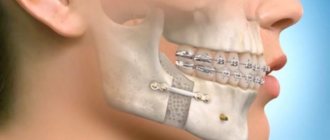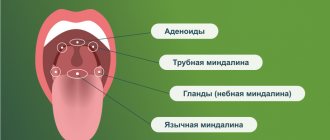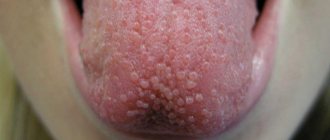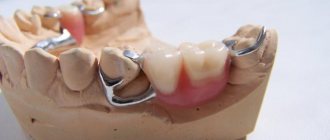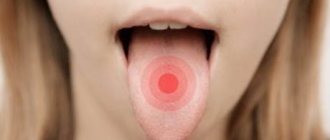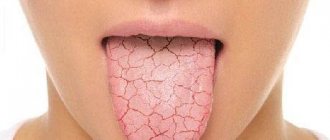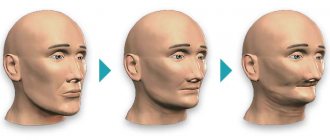Structure
The formation of the mandibular region is the result of the evolution of the human body. In the process of development, the entire structure became mobile and autonomous, gaining the ability to move freely and perform the basic functions necessary for a person. The temporal joint is localized in the fossa, connecting to the bony part.
When a subluxation occurs, the head of the joint partially comes out of the fossa, succumbing to the influence of external factors. As a rule, this phenomenon becomes a consequence of a general weakening of the ligaments or disturbances in the articular cavity. If you have the proper skills and practical experience, you can restore the original position of the jaw yourself, but the systematic occurrence of such a problem is the basis for complex treatment.
Group No. 5: acute and old
If the dislocation or subluxation of the jaw is fresh, that is, it occurred quite recently, then symptoms such as pain and malaise appear clearly, and doctors speak of an acute form.
It’s hard to believe, but there are situations when, when injured, the patient is in no hurry to seek professional help. Either first aid was unqualified and the treatment of acute dislocation was carried out incorrectly. In all of these cases we are talking about old dislocations. Only a few correction methods are suitable for their reduction, which are very painful and require long-term rehabilitation.
What type of dislocation a particular person has can only be told by a doctor who will make an accurate diagnosis based on a visual examination and using radiography, which allows one to determine the extent and extent of the problem, as well as to exclude the presence of fractures and cracks in the jaw bone.
The type of dislocation can only be detected on an x-ray
Causes and classification
Displacement of the lower jaw is the result of the application of an external force that exceeds in intensity the force of natural fixation. For each person, such a threshold is individual - some patients may suffer from minor force, while others are able to endure strong mechanical impact without consequences.
The main factors determining the tightness of the fit are ligament tension and bone attraction. The weakening of these connections can provoke the occurrence of subluxation, both one-time and in a chronic form. The reasons that negatively affect the condition of the jaw region include:
- Advanced stages of rheumatism;
- Developing arthritis or osteomyelitis;
- The occurrence of cramps and muscle spasms;
- Consequences of encephalitis;
- Epileptic seizures.
They also note the existence of traumatic factors, the occurrence of which can cause subluxation:
- Mechanical injuries - impacts, collisions;
- Excessive opening of the mouth;
- Having bad habits;
- Congenital abnormalities that affect the formation of the articular fossa.
The classification used in dentistry differentiates pathology according to the following criteria:
- Based on the position of the articular head - anterior, posterior and lateral subluxation;
- According to the specificity of the displacement - one-sided and two-sided form;
- Depending on the severity - for simple and complex cases.
The choice of technique, as well as the timing of treatment, depend on the original source of the problem. It is easiest to cure the pathology in the early stages, so at the first symptoms of subluxation it is recommended to consult a doctor and undergo an examination.
Causes of jaw dislocation
Dislocation of the lower jaw can occur as a result of screaming, strong yawning, while eating or vomiting, that is, in those moments when the mouth opens sharply and widely (trying to bite off too large a piece of food can also cause jaw dislocation.). Bad habits of opening bottles or packages with your teeth can also cause harm, excessively straining your jaw.
There are frequent cases of its damage as a result of a strong blow. Professional athletes - wrestlers and boxers - face dislocation of the lower jaw. You can cause displacement of the articular head by chewing too hard and tough food, for example, nut shells. To protect your jaw from damage, you should avoid too sudden and rapid movements while yawning and chewing.
Dislocation of the lower jaw can also be non-traumatic. For example, some diseases, including rheumatism, gout, osteomyelitis, poliomyelitis, arthritis or arthrosis, cause relaxation of the ligaments, as a result of which the height of the joint decreases and its shape is deformed.
In women, due to the shallower depth of the articular fossa, it is easier to displace the head of the joint. Accordingly, jaw dislocation occurs much more often in them than in men.
Symptoms and signs
For each form of subluxation, there are characteristic individual signs that indicate the presence of deviations. However, there are a number of universal symptoms observed in all types of pathology:
- The occurrence of pain of varying severity, aggravated when the patient attempts to move the lower jaw;
- Limited mobility of the temporomandibular joint, making it difficult to perform usual actions - eating or speaking;
- Active secretion of saliva associated with a swallowing problem.
In addition, with bilateral dislocations affecting the anterior zone, the following circumstances occur:
- Inability to close the jaws, forcing the patient to keep his mouth open;
- Pain in the skull and swelling of tissue in the ear area;
- Partial or complete dysfunction of the speech apparatus.
The unilateral form of subluxation has similar symptoms, but allows partial closure of the mouth, which significantly alleviates the patient’s problems. In turn, posterior bilateral subluxation is characterized by the opposite symptomatology - the inability to open the jaw, pressing of the lower part into the larynx area.
First aid and treatment
If a subluxation occurs, it is recommended to straighten the jaw using the infiltrative or guide method, after first calming the patient and giving him an anesthetic. The lack of such skills requires contacting a qualified orthodontist, who will not only restore the natural structure of the jaw apparatus, but also advise measures aimed at restoring and preventing recurrences. If the procedure aimed at realigning the joint is carried out in a timely manner, as well as medical recommendations are followed during the rehabilitation period, the prognosis for a complete cure is very favorable.
Therapy
Regardless of the form of the pathology, it requires realignment of the joint into the jaw fossa. Depending on the complexity of the clinical picture, several adjustment methods can be used to eliminate the problem.
Hippocratic method
Only an orthodontist can put the jaw back in place. Before carrying out the manipulation, he wraps the thumbs with a sterile cloth, sits the patient on a chair, and stands facing him. Everything is done under local anesthesia.
The wrapped fingers are placed on the molars, and the rest tightly grasp the entire jaw.
The doctor gently presses on the bone, relaxing the chewing muscle tissue. Then the jaw moves back, and then sharply upward. A click indicates that the joint is in place. The jaws will close spontaneously.
At the end of the procedure, the patient is given a sling-shaped bandage, and the load on the affected area is minimized for 14 days.
Basics of treatment of osteomyelitis of the upper jaw and expected prognosis.
In this publication we will talk about laser vestibuloplasty of the lower jaw.
Here https://www.vash-dentist.ru/lechenie/chelyust/opisanie-pereloma-nizhney.html we will talk about methods of treating a fracture of the lower jaw.
Popescu method
It is carried out when diagnosing an anterior dislocation in an advanced stage of its course. The method is justified when any other methods are ineffective. Based on the situation, either general or local anesthesia is prescribed.
All actions are carried out with the patient in a horizontal position. Between the lower molars and upper teeth, rollers made of soft fabric or bandage with a diameter of about 15 mm are attached.
The doctor applies pressure to the chin area upward and backward. This way the joint moves into the desired position.
Based on prostheses
It is carried out when there is a risk that the situation will become systemic. Special orthodontic devices – splints – are fixed on the teeth. They are classified into two types - removable and non-removable. The main purpose is to prevent the oral cavity from opening to its full potential.
In the vast majority of cases, this method of treatment is a successful relief from the pathology , with the exception of rare minor difficulties associated with the degree of mobility of the joint itself.
Comments
My brother somehow had a dislocated jaw. He said it hurt terribly! But can there be relapses?
Andrey (12/28/2020 at 01:29 pm) Reply to comment
- Dear Andrey! A relapse, and more than one, is possible if a person suffers from joint diseases and other pathologies (for example, malocclusion), which constantly lead to overload and improper functioning of the temporomandibular joint. And, of course, a new dislocation is possible if you neglect the rules of personal safety, if you get into an accident or other traumatic situations.
Editorial staff of the portal UltraSmile.ru (12/30/2020 at 09:12) Reply to comment
I constantly feel that my jaw seems to be overstrained; sometimes there are clicks on one side. I contacted a therapist. The doctor did not take an x-ray, but felt and determined a slight inflammation. He only prescribed ibuprofen, and said everything else would go away on its own. But I don’t understand how the medicine will help relieve tension in the jaw?
Katya (16.01.2021 at 14:22) Reply to comment
- Ibuprofen will relieve the inflammatory process, but the tension in the jaw will remain, as it is most likely associated with TMNS dysfunction. You may need to undergo a dental examination by an orthodontist and orthopedist. The problem may be associated with bite pathologies, incorrectly installed orthopedic structures, or the need for their installation.
Editorial staff of the portal UltraSmile.ru (01/19/2021 at 09:24) Reply to comment
Write your comment Cancel reply
Complications
If the patient promptly sought medical help and strictly followed the recommendations while wearing the splint, then the outcome is favorable. In this case there should be no relapses. But early load on the jaw and the presence of deforming joint diseases can provoke a relapse, and, as a rule, more than one.
Make an appointment with our specialists and find out first-hand the main symptoms of a dislocated lower jaw. Remember that only qualified medical care will help you get rid of the problem for a long time and enjoy all the joys of life.
Related services: Dental implantation Treatment of temporomandibular joint disorders
Symptoms
Symptoms of a dislocated jaw are as follows:
- feeling of pain in the chin;
- modification of the standard bite;
- inability to fully open or close the oral cavity;
- excessive salivation;
- speech disorder;
- swelling under the hearing organs;
- characteristic clicks in the moving part.
Bleeding from the mouth or ear, partial loss of vision, paralyzing pain in the neck - indicate symptoms of a pronounced dislocation of the jaw. In this case, the injured person is wrapped in a wet towel, specialists are called or escorted to the nearest emergency room.


